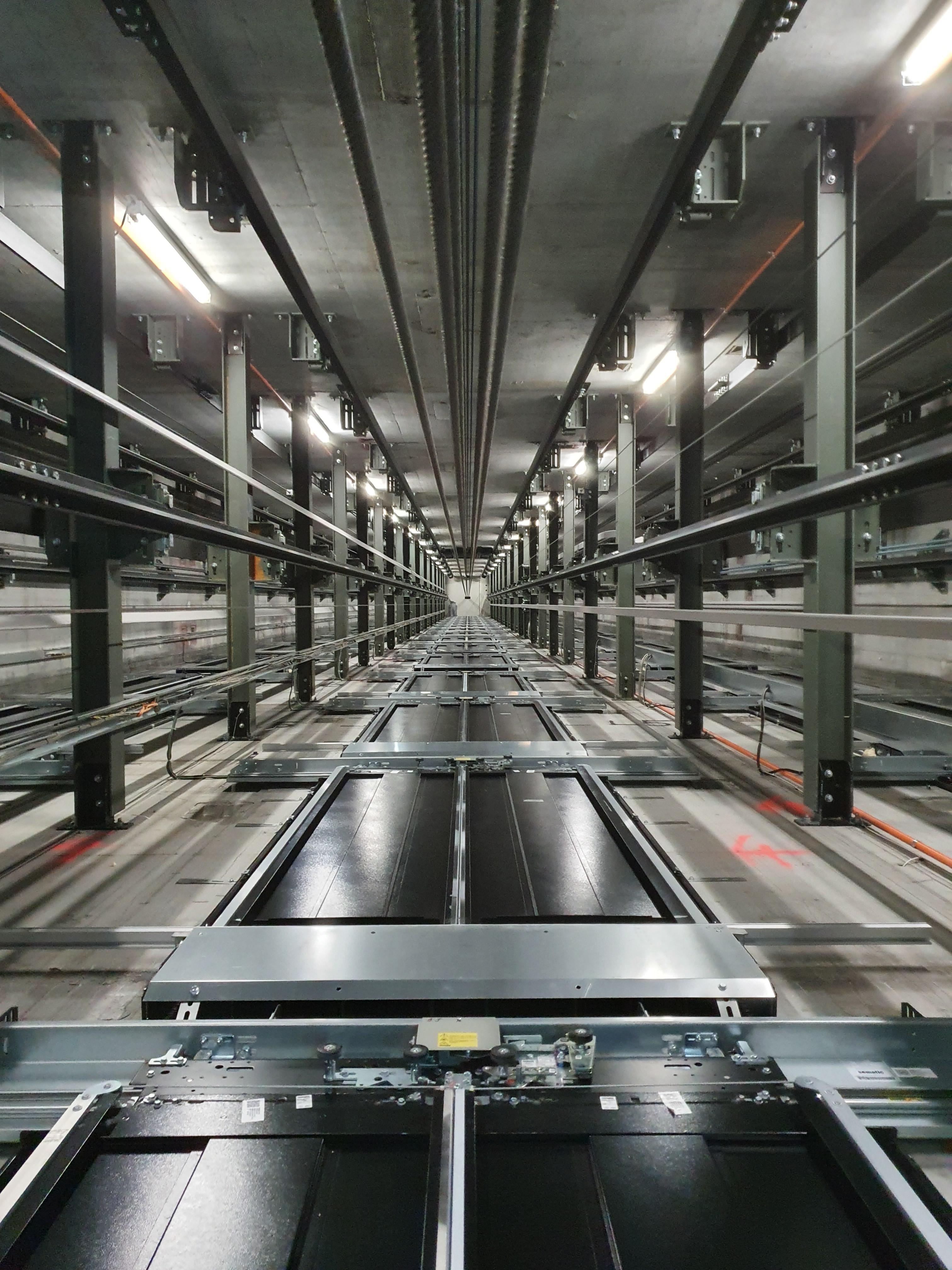Top of Shaft
Per ASME A17.1 Section 2.27.3.2.1(c), smoke detectors are only allowed in elevator shafts if there are sprinklers installed in the shaft. In Chicago, sprinklers are prohibited at the top of the shaft in non-CMS regulated facilities, so consequently no detection is allowed. If the elevator controller is located in the shaft in a machine room-less configuration, a smoke detector must be placed above the controller. In any situation, if a smoke damper is installed at the top of the shaft, it’s permissible (even required) to be actuated by a smoke detector located in the shaft.
Top of Shaft Location
The placement of the detector is based on coverage of the entire surface area of the shaft ceiling, but most installers co-locate the smoke detector with the required heat detector that must be within 2′ of the sprinkler head. The sprinkler head is almost always a sidewall head, so the detection gets placed at the sidewall of the shaft. This works if the detector is within 21′ from any point on a smooth ceiling, but if the shaft handles 3 cabs, it probably won’t. Many installers think the smoke detector has to be within 2′ of the sprinkler head, but only the heat detector does. Obviously it’s easier for the installer to co-locate the two detectors, but the shop drawing preparer should help ensure proper location of the smoke detector by placing a note on the appropriate shop drawing if sidewall location is not adequate.
Elevator Pit
Regarding the elevator pit, sprinklers are required per NFPA 13 Ch. 9.3.6.1 unless the shaft is non-combustible & does not contain hydraulic fluids, per NFPA 13 Ch. 9.3.6.2. If there is a sprinkler head installed, detection is required per ASME A17.1 Sec. 2.27.3.2.1(c) as previously noted. Finally, per NFPA 72 Ch. 21.3.8(2), smoke detection is required for the fireman’s hat function. Since there’s a high ceiling, location of the smoke detector in the pit is allowed to be near the sprinkler head per NFPA 72 Ch. 17.7.3.1.3.
Local Interpretation
One large word of warning in suburban Chicago: most of the elevator acceptance inspections are performed by a third party firm. It’s this firm’s interpretation that since ASME A17.1 requires any wiring installed within 48″ of the bottom of the shaft to be watertight, any application of water in this area of the hoistway doesn’t present a safety hazard to the safe operation of the elevator. Therefore, this negates the need for any detection in the pit & will require their removal before it allows the elevator to be used. Not only the removal of the sensor from its base, but also the removal of the conduit as well mas the firestopping of the hoistway penetration by the conduit. Coordinate with the elevator contractor before installing detection in the pit in the Chicago suburbs! Hopefully the NFPA 72 and ASME 17.1 committees will reconcile this in future editions.
Affiliated Fire Systems has been installing elevator related Gamewell-FCI fire alarm equipment for 39 years. We identify & get in front of potential problems like these before they become problems. That benefits everyone. Contact us today to get your system designed & installed right the first time.
Gene Rowe NICET Level IV Affiliated Fire Systems Downers Grove, IL



Would love to have Gene Rowes contact information.